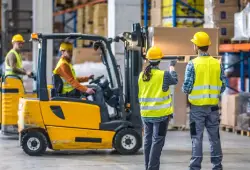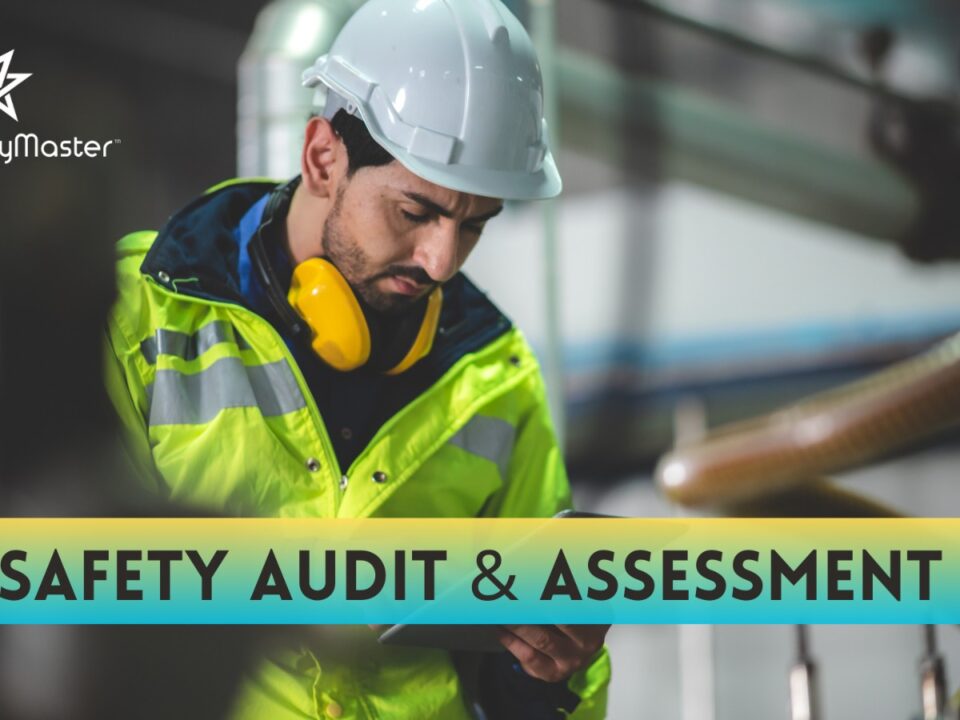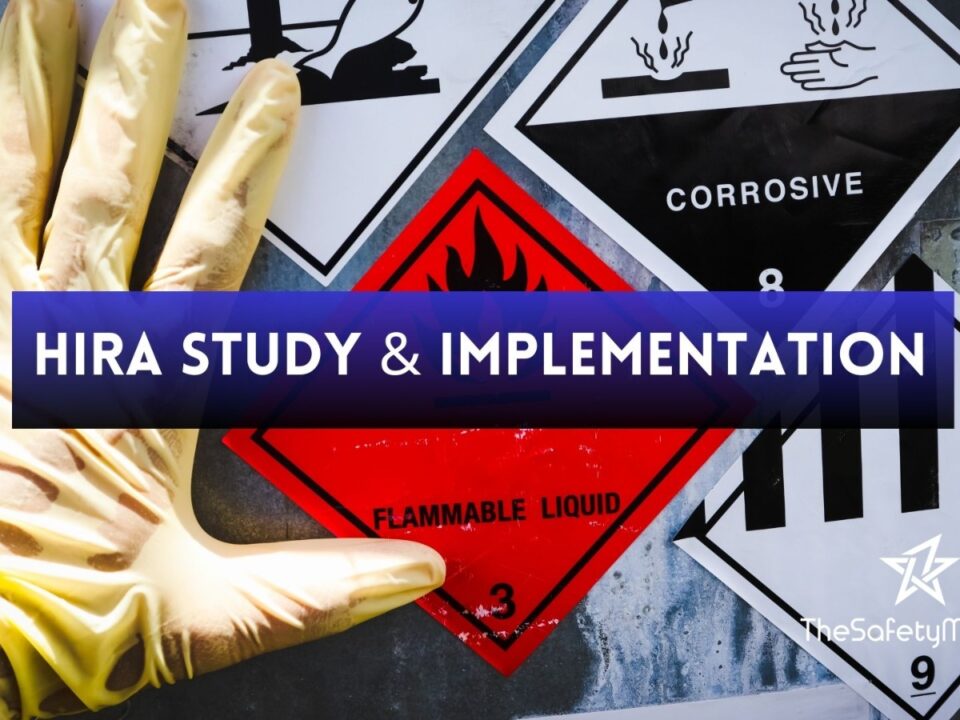Forklift Safety Training: Highlighting Common Hazards

Modern EOT Crane Safety: Analytics & Training for New Tech
December 28, 2024
Excavation and Trenching Safety Training: A Comprehensive Guide by The Safety Master
December 30, 2024Forklifts are indispensable in various industries, including warehousing, construction, and manufacturing, due to their efficiency in handling and transporting heavy loads. However, operating forklifts presents several hazards that can lead to severe injuries or fatalities if proper safety measures are not followed. This training guide aims to highlight common hazards associated with forklift operation and provide essential safety practices to mitigate these risks.
Common Hazards Associated with Forklift Operation
- Tip-Overs
Hazard: One of the most severe hazards is forklift tip-overs, which can occur due to improper handling of loads, uneven surfaces, or sharp turns. Forklifts have a high center of gravity, making them prone to tipping, especially when carrying heavy or unevenly distributed loads.
Safety Practices:
- Always adhere to the manufacturer’s load capacity.
- Distribute loads evenly and secure them properly.
- Avoid sudden turns and excessive speeds.
- Operate forklifts on stable, level surfaces.
- Collisions
Hazard: Collisions with other forklifts, stationary objects, or pedestrians are common in busy work environments. Poor visibility, blind spots, and congested areas increase the risk of collisions.
Safety Practices:
- Use horn at intersections and in blind spots.
- Maintain a clear line of sight and ensure mirrors are adjusted properly.
- Implement and follow designated travel paths and speed limits.
- Use spotters in areas with limited visibility.
- Falling Loads
Hazard: Loads can fall off the forks if not properly secured or if the forklift is operated carelessly. Falling loads can injure operators and nearby workers.
Safety Practices:
- Ensure loads are stable and properly balanced.
- Use appropriate attachments for irregularly shaped loads.
- Do not lift loads higher than necessary.
- Regularly inspect and maintain forklift forks and attachments.
- Poor Maintenance and Mechanical Failures
Hazard: Mechanical failures due to poor maintenance can lead to accidents, including brake failures, steering issues, and hydraulic leaks.
Safety Practices:
- Perform daily pre-operation inspections, checking brakes, lights, steering, and hydraulics.
- Follow a regular maintenance schedule as per manufacturer recommendations.
- Report and address any mechanical issues immediately.
- Keep a detailed maintenance log for each forklift.
- Inadequate Training and Operator Errors
Hazard: Inadequately trained operators are more likely to make errors, leading to accidents. Lack of knowledge about forklift controls, load handling, and safety procedures increases risk.
Safety Practices:
- Ensure all operators receive comprehensive training and certification.
- Conduct regular refresher training sessions.
- Evaluate operator performance periodically.
- Foster a safety-first culture and encourage reporting of unsafe practices.
- Improper Use of Forklifts
Hazard: Using forklifts for purposes other than their intended use, such as lifting people without proper attachments, can lead to serious accidents.
Safety Practices:
- Use forklifts only for their intended purposes.
- Utilize proper lifting platforms or cages for lifting personnel.
- Adhere to manufacturer guidelines for forklift use.
- Supervise and enforce correct forklift operation procedures.
- Environmental Factors
Hazard: Wet, icy, or uneven surfaces can cause forklifts to skid or tip over. Poor lighting and ventilation in operating areas also contribute to hazards.
Safety Practices:
- Operate forklifts at slower speeds in adverse conditions.
- Ensure work areas are well-lit and ventilated.
- Maintain clean and dry floors in operating areas.
- Use forklifts with appropriate tires for different surfaces.
- Pedestrian Safety
Hazard: Forklifts operating in areas with pedestrian traffic pose a significant risk. Pedestrians can be struck by forklifts or falling loads.
Safety Practices:
- Implement and enforce designated pedestrian walkways.
- Use warning signs and barriers to separate forklifts and pedestrians.
- Ensure operators and pedestrians are aware of each other’s presence.
- Provide high-visibility clothing for pedestrians in forklift operating areas.
Summary of Safety Practices
To mitigate the hazards associated with forklift operation, it is crucial to implement a comprehensive safety program that includes the following key practices:
- Training: Ensure all forklift operators are trained and certified, with regular refresher courses and performance evaluations.
- Inspections: Conduct daily pre-operation inspections and maintain a regular maintenance schedule.
- Load Handling: Secure and balance loads properly, adhere to load capacity limits, and use appropriate attachments.
- Operational Safety: Follow safe driving practices, use horns and signals, and operate at safe speeds.
- Environmental Safety: Ensure operating areas are well-lit, ventilated, and free of hazards like wet or uneven surfaces.
- Pedestrian Safety: Implement safety measures to protect pedestrians, including designated walkways, barriers, and high-visibility clothing.
Conclusion
Forklift safety training is essential to prevent accidents and ensure a safe working environment. By understanding the common hazards associated with forklift operation and implementing the recommended safety practices, employers can significantly reduce the risk of injuries and fatalities. The Safety Master is committed to providing the necessary training and resources to promote a culture of safety and ensure that every worker returns home safely at the end of the day.



